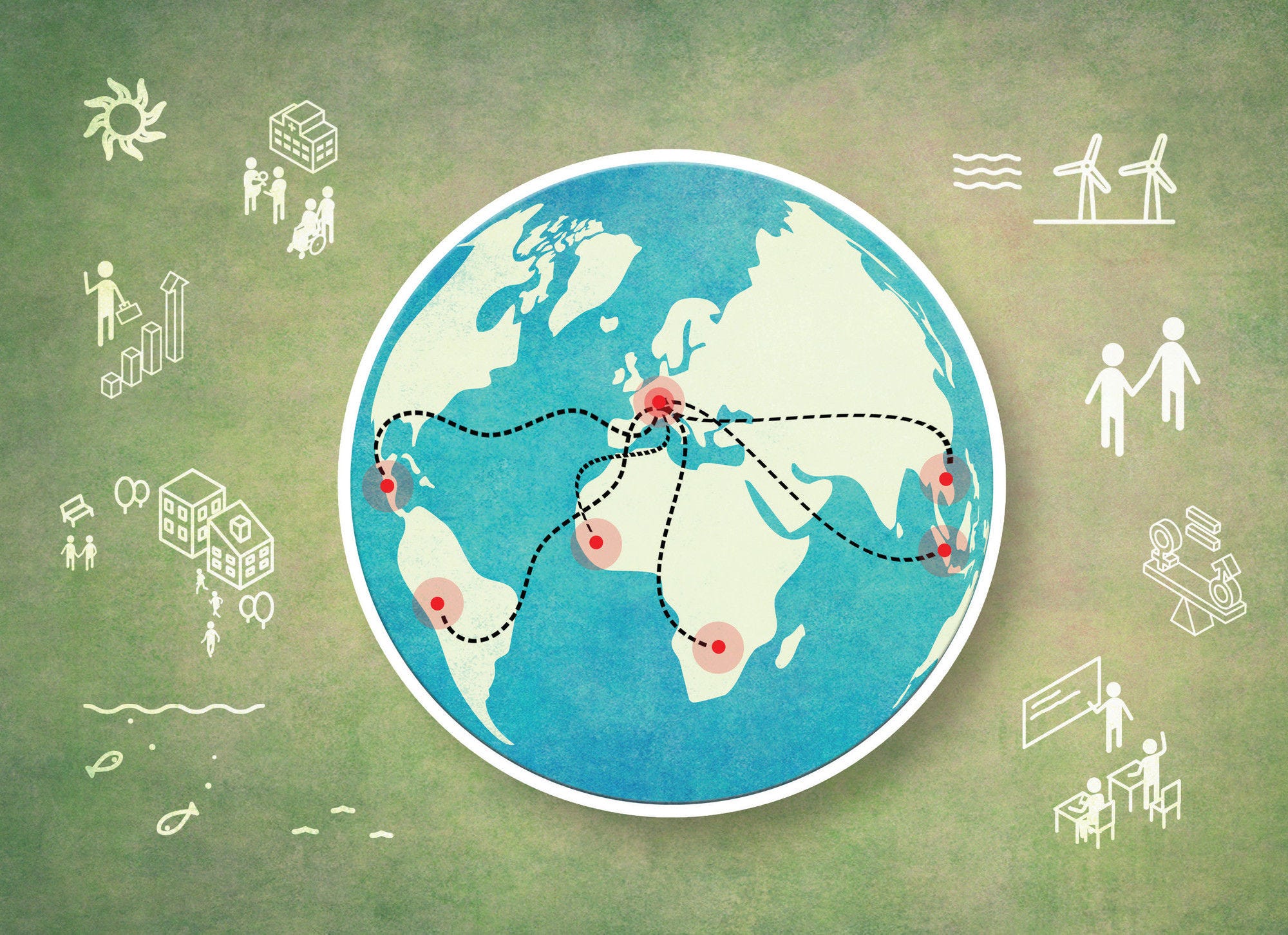Cities and regions play a fundamental role in the transition from a linear to a circular economy, as they are responsible for key policies in local public services such as transport, solid waste, water and energy that affect citizens’ well-being, economic growth and environmental quality. This synthesis report builds on the findings from 51 cities and regions contributing to the OECD Survey on the Circular Economy in Cities and Regions and on lessons learnt from the OECD Policy Dialogues on the circular economy carried out in Groningen (Netherlands), Umeå (Sweden), Valladolid (Spain) and on-going in Glasgow (United Kingdom), Granada (Spain), and Ireland. The report provides a compendium of circular economy good practices, obstacles and opportunities, analysed through the lens of its 3Ps analytical framework (people, policies and places). It concludes with policy recommendations, a Checklist for Action and a Scoreboard to self-assess the existence and level of implementation of enabling governance conditions to foster the transition towards the circular economy in cities and regions.
The Circular Economy in Cities and Regions

Abstract
Executive Summary
The places where people live and work, consume and dispose hold a fundamental role in the transition to a circular economy. By 2050, the global population is estimated to reach 9 billion people, 55% of which will be living in cities. The pressure on natural resources will increase, while new infrastructure, services and housing will be needed. Already, cities represent almost two-thirds of global energy demand, produce up to 50% of solid waste and are responsible for 70% of greenhouse gas emissions. It is estimated that globally by 2050, the levels of municipal solid waste will double. The COVID-19 crisis highlighted the unsustainable nature of certain environmental and social trends and led to reconsiderations around current production and consumption patterns towards a green recovery. Through more efficient use of resources, eco-design, reuse, repurpose and remanufacturing, the circular economy is an opportunity for a new way of thinking and an example of resilience in the face of future crises.
The circular economy is based on three principles: i) design out waste and pollution; ii) keep products and materials in use; and iii) regenerate natural systems. In cities and regions, the circular economy implies a systemic shift, whereby: services are provided, making efficient use of natural resources as primary materials and optimising their reuse; economic activities are planned and carried out in a way to close, slow and narrow loops across value chains; and infrastructure is designed and built to avoid linear lock‑in to avoid material waste.
The circular economy is expected to generate positive impacts on the environment through reducing atmospheric emissions, increasing the share of renewable energy and recyclable resources, as well as reducing the use of raw materials, water, land and energy. Projections show that shifting from a linear approach of “take, make and dispose” to a circular system is estimated to have as much as USD 4.5 trillion potential for economic growth by 2030. The circular economy could be worth as much as USD 700 billion in global consumer good material savings. Moreover, with activities such as repair, maintenance, upgrading, remanufacturing, reuse, recycling of materials and product-life extension, more labour intensive than the mining and manufacturing of a linear economy, the circular economy is likely to provide job creation opportunities.
The potential of the circular economy to support sustainable cities, regions and countries still needs to be unlocked. Achieving this requires going beyond solely technical aspects. It requires setting the right governance and enabling environment framework. The 3Ps framework (“people”, “policies” and “places”) used in this report, argues that the circular economy implies a shift towards sustainable production and consumption pathways as well as new business and governance models (people). It also requires a holistic and systemic approach that cuts across sectoral policies, and a functional approach going beyond the administrative boundaries of cities and linking them to their hinterland and rural areas to close, narrow and slow loops at the right scale (places).
According to the results of the OECD Survey on the Circular Economy in Cities and Regions, respondents face five major categories in terms of gaps:
Financial gaps: A vast majority of the 51 surveyed cities and regions reported challenges related to insufficient funding (73%), as well as financial risks (69%), lack of critical scale for business and investments (59%), and lack of private sector engagement (43%).
Regulatory gaps: Regulatory barriers can inhibit the development and implementation of circular economy strategies. Inadequate regulatory frameworks and incoherent regulation across levels of government represent a challenge for respectively 73% and 55% of respondents.
Policy gaps: A number of local policies and strategies share objectives with the circular economy at large. However, the lack of a holistic vision is a major obstacle for 67% of respondents, often due to poor leadership and co-ordination, and/or the lack of political will.
Awareness gaps: Cultural barriers represent a challenge for 67% of surveyed cities and regions along with lack of awareness (63%) and inadequate information (55%) for policymakers to take decisions, businesses to innovate and residents to embrace sustainable consumption patterns.
Capacity gaps: The lack of human resources is a challenge for 61% of surveyed cities and regions. Technical capacities should not just aim for optimising linear systems but strive towards changing relations across value chains and preventing resource waste.
The report suggests cities and regions act simultaneously as promoters, facilitators and enablers of the circular economy, in a shared responsibility with national governments and stakeholders. Cities and regions can:
Promote the circular economy, acting as a role model for businesses and citizens, providing clear information and establishing goals and targets; promoting a circular economy culture and enhancing trust.
Facilitate connections and dialogue, by: implementing effective multi-level governance to align priorities and incentives across sectors, levels of government and stakeholders; fostering system thinking to achieve policy coherence, integrating siloed policies; facilitating collaboration amongst public, not-for-profit actors and businesses; adopting a functional approach that goes beyond administrative boundaries and fosters rural-urban linkages and partnerships.
Enable appropriate governance conditions, including: identifying the regulatory frameworks that need to be adapted to foster the transition to the circular economy; mobilising financial resources and allocating them efficiently; adapting human and technical resources to the challenges to be met; supporting business development through spaces for innovation, public procurement and partnerships; generating an information system based on robust data to evaluate results and policy outcomes.
To support the implementation of these recommendations, the report also provides a Checklist for Action with more specific guidance and milestones and a Scoreboard on the Governance of the Circular Economy for governments to self-assess existing enabling conditions for a circular economy, identify challenges and set priorities towards a more effective, efficient and just circular-economy transition.
In the same series
Related publications
-
 Working paper27 June 2024
Working paper27 June 2024











